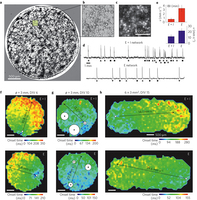Enric Alvarez, professor d'Enginyeria Física, ha publicat un article a Nature junt amb altres investigadors
25/07/2013
Enric Alvarez, professor d'Enginyeria Física, junt amb altres investigadors, ha publicat un article a Nature Physics titulat "Noise focusing and the emergence of coherent activity in neuronal cultures". Aquest treball ha permès establir un mecanisme bàsic d’autoorganització col·lectiva de les neurones en cultiu. Els autors han pogut determinar l’origen físic d’aquest comportament col·lectiu, que té lloc sense la necessitat de cap líder o guia d’origen biològic.
Veure més informació a
La Vanguardia
Sala de Prensa UPC
Abstract
At early stages of development, neuronal cultures in vitro spontaneously reach a coherent state of collective firing in a pattern of nearly periodic global bursts. Although understanding the spontaneous activity of neuronal networks is of chief importance in neuroscience, the origin and nature of that pulsation has remained elusive. By combining high-resolution calcium imaging with modelling in silico, we show that this behaviour is controlled by the propagation of waves that nucleate randomly in a set of points that is specific to each culture and is selected by a non-trivial interplay between dynamics and topology. The phenomenon is explained by the noise focusing effect—a strong spatio-temporal localization of the noise dynamics that originates in the complex structure of avalanches of spontaneous activity. Results are relevant to neuronal tissues and to complex networks with integrate-and-fire dynamics and metric correlations, for instance, in rumour spreading on social networks.
Veure més informació a
La Vanguardia
Sala de Prensa UPC
Abstract
At early stages of development, neuronal cultures in vitro spontaneously reach a coherent state of collective firing in a pattern of nearly periodic global bursts. Although understanding the spontaneous activity of neuronal networks is of chief importance in neuroscience, the origin and nature of that pulsation has remained elusive. By combining high-resolution calcium imaging with modelling in silico, we show that this behaviour is controlled by the propagation of waves that nucleate randomly in a set of points that is specific to each culture and is selected by a non-trivial interplay between dynamics and topology. The phenomenon is explained by the noise focusing effect—a strong spatio-temporal localization of the noise dynamics that originates in the complex structure of avalanches of spontaneous activity. Results are relevant to neuronal tissues and to complex networks with integrate-and-fire dynamics and metric correlations, for instance, in rumour spreading on social networks.


Comparteix: